Published 29 July 2008
URL: http://www.kingcorn.org/news/articles.08/DaysAfterSilk-0729.html
Late Planted Corn: Enough Time to Mature?
R.L. (Bob) Nielsen
Agronomy Dept., Purdue Univ.
West Lafayette, IN 47907-2054
Email address: rnielsen
at purdue.edu
As Indiana's corn crop enters the final stretch of the season, folks with late-planted corn are looking ahead on the calendar and wondering whether their fields will mature safely before the arrival of a killing fall freeze. Technically, 97% of Indiana's corn crop was planted as of June 15 (Fig. 1, USDA-NASS, 2008), but more than the usual number of acres were replanted later than that as a result of poor stand survival due to the June floods and field ponding events.
The developmental consequences of the late finish to corn planting, the lateness of many replanted fields, and the relatively cool start to the growing season are reflected in the delayed silking progress of the state's corn crop to date (Fig. 2, USDA-NASS, 2008). As of 27 July, Indiana's corn silking progress is 1.5 to 2 weeks behind the most recent 5-year average and closely resembles the progress of the 2002 and 2003 crops.
If the comparison to those years holds through to maturity, quite a bit of Indiana's corn crop may mature from late September through mid-October (Fig. 3). That prospect is the reason why folks are looking to the calendar and praying that the first killing fall freeze does not come early this year.
Most agronomists consider 28F as the definition of a killing fall freeze for corn. Frosts that occur at higher temperatures may damage leaves, but typically do not kill the whole plant. Climatologists work with years of weather data and develop probability tables that offer some guidance on when to expect such damaging killing fall freezes.
Based on such climatological historical normals for Indiana (National Climatic Data Center, 2008), a killing fall freeze occurs 10% of the time, on average, by the 10th of October in Indiana and ranges from as early as the first week of October to the last week of October depending on the area of the state. Fifty percent of the time, on average, a killing frost freeze occurs by the 26th of October in Indiana and ranges from as early as mid-October to as late as mid-November.
Given that perspective on fall freeze dates, what can be said about the likelihood that a given field of corn will mature safely (physiological maturity, kernel black layer) prior to a killing freeze? One of the simplest means by which to estimate maturity date may be in terms of number of days after silking.
Results from earlier research on corn development with delayed planting (Nielsen et al., 2002) suggest that corn planted in mid- to late-June in Indiana and Ohio will typically mature from 68 to 71 days after silking (Fig. 4). The number of days from silking to maturity increases with later-planted corn primarily because growing degree day (GDD) accumulation per day decreases dramatically toward late summer and early fall (Fig. 5) and so it simply requires more calendar days for a late-silking crop to accumulate a minimum number of GDDs to reach physiological maturity.
These results do not bode well for late-planted corn that silks during the first or second week of August, because they suggest that physiological maturity of such late-silking corn may not occur until mid- to late-October where the risks of a killing fall freeze increase. Furthermore, grain of late-maturing crops will not dry as quickly in the field prior to harvest because of the naturally cooler temperatures of that time of the year (Nielsen, 2008).
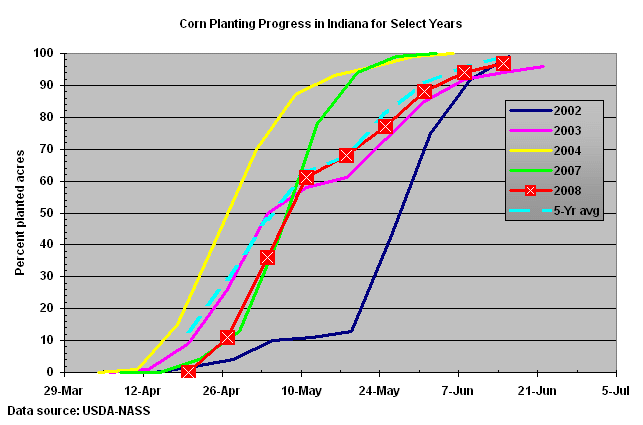
Fig. 1. Corn planting progress in Indiana for 2008 in comparison with select
other years. Data source: USDA-NASS.
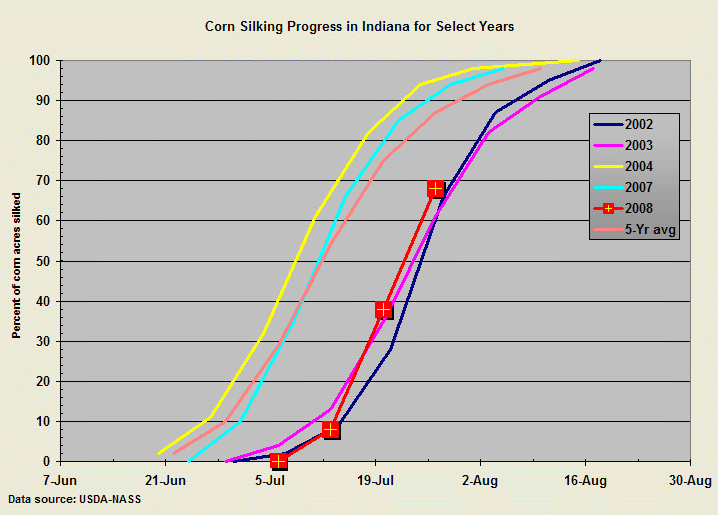
Fig. 2. Corn silking progress in Indiana as of July 27, 2008 in comparison
with select other years. Data source: USDA-NASS.
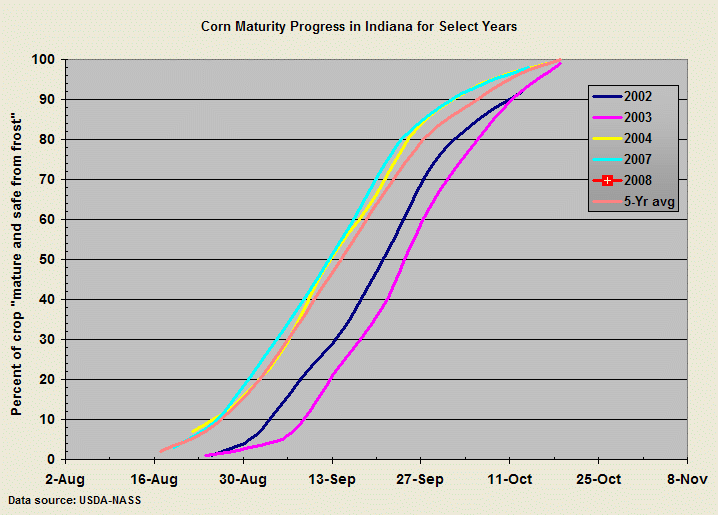
Fig. 3. Corn maturity progress in Indiana for select years. Data source: USDA-NASS.
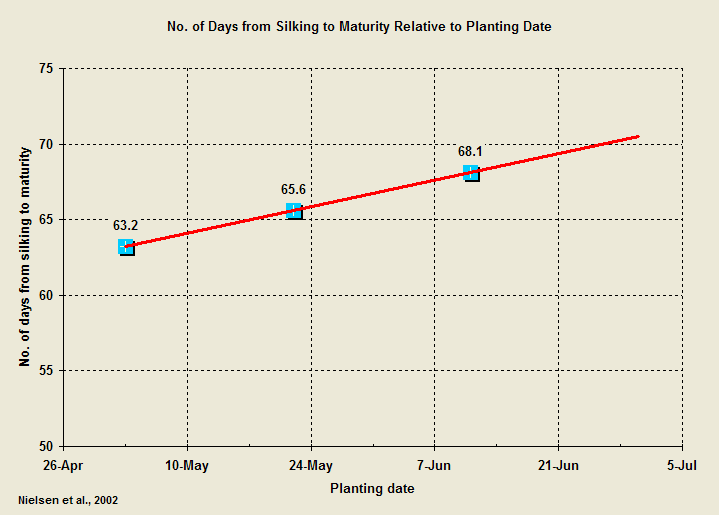
Fig. 4. Number of days from silking to physiological maturity for three corn
hybrids and 12 environments
in Indiana and Ohio, 1991-1994. Data adapted from Nielsen et al., 2002.
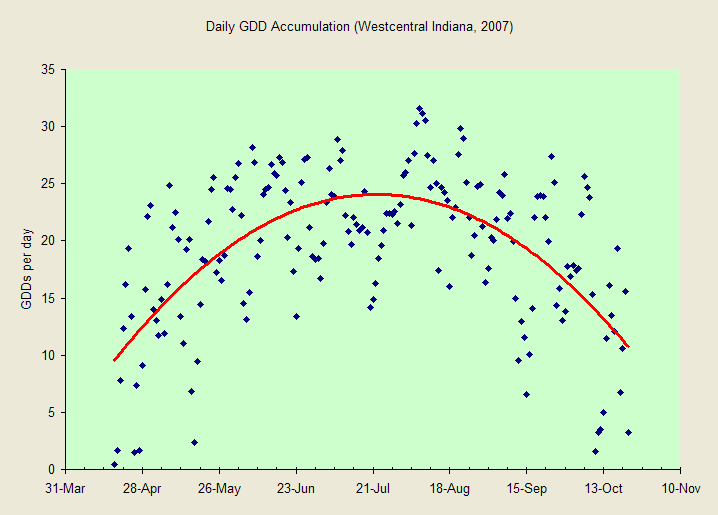
Fig. 5. Change in daily growing degree day (GDD) accumulation throughout a
growing season. Data collected in
2007 at the Purdue Crop Diagnostic Training & Research Center, near W.
Lafayette, IN.
Related References
National Climatic Data Center. 2008. Frost/Freeze Data for Indiana, 1971-2000. U.S. Dept Commerce - National Climatic Data Center. [On-line]. Available at http://cdo.ncdc.noaa.gov/climatenormals/clim20supp1/states/IN.pdf. [URL accessed 7/29/08].
Nielsen, R.L. (Bob). 2007. Grain Fill Stages in Corn. Corny News Network, Purdue Univ. [On-line]. Available at http://www.kingcorn.org/news/timeless/GrainFill.html. [URL accessed 7/29/08].
Nielsen, R.L. (Bob). 2008. Field Drydown of Mature Corn Grain. Corny News Network, Purdue Univ. [On-line]. Available at http://www.kingcorn.org/news/timeless/GrainDrying.html. [URL accessed 7/29/08].
Nielsen, R.L., P.R. Thomison, G.A. Brown, A.L. Halter, J. Wells, & K.L. Wuethrich. 2002. Delayed Planting Effects on Flowering and Grain Maturation of Dent Corn. Agron. J. 94:549-558.
USDA-NASS. 2008. Weekly Crop & Weather Reports. Indiana Office of USDA-NASS. [On-line]. Available at http://www.nass.usda.gov/Statistics_by_State/Indiana/Publications/Crop_Progress_&_Condition/index.asp. [URL accessed 7/29/08].

